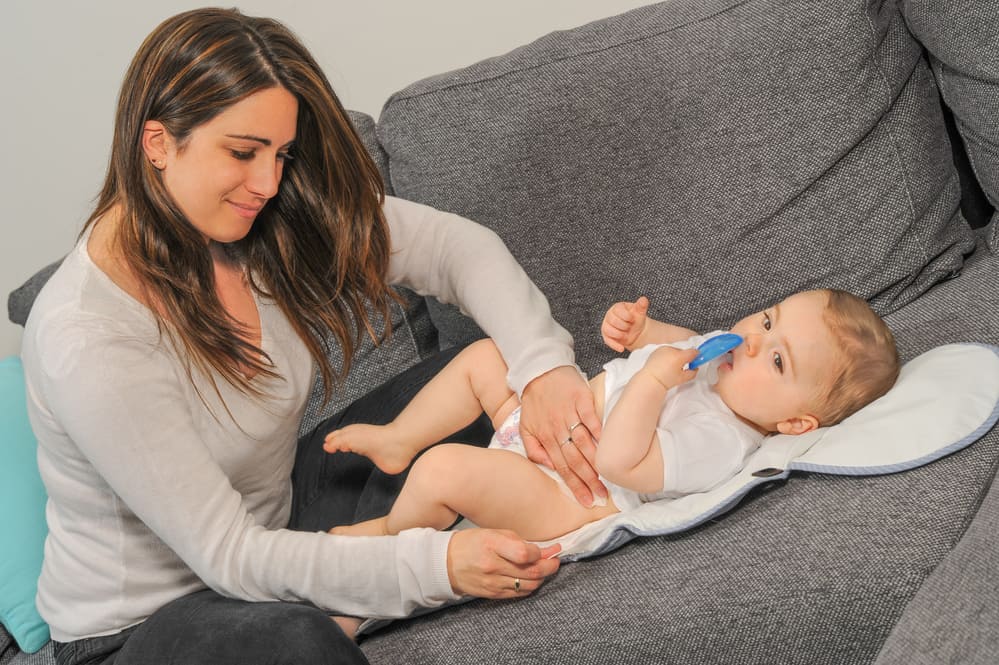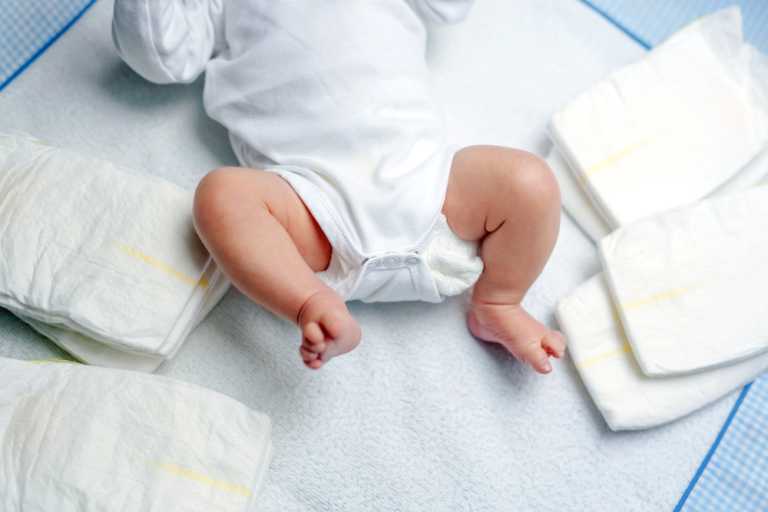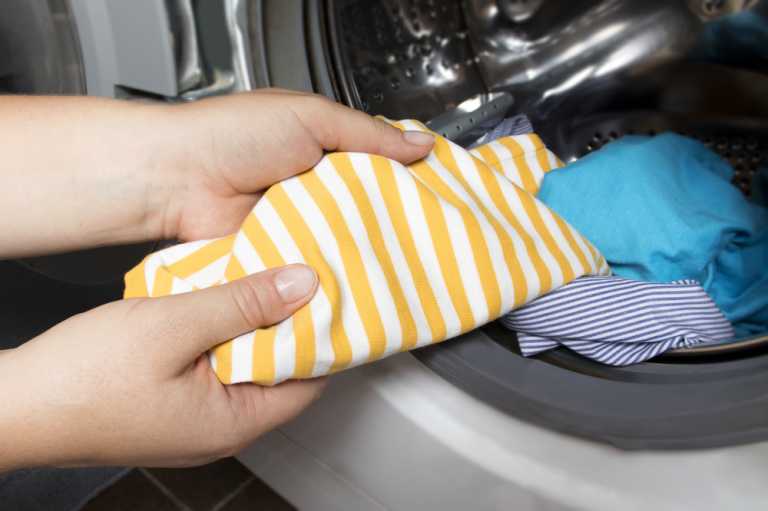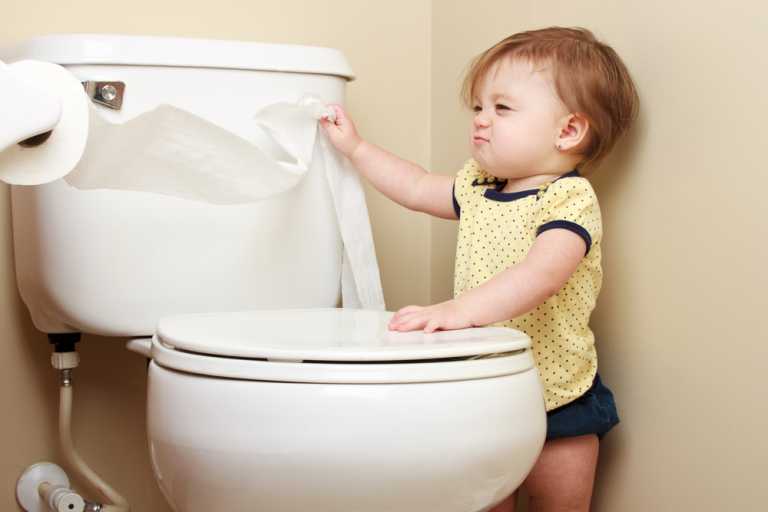Changing diapers isn’t difficult, but it takes a surprising amount of time. Infants require an average of 10 daily diaper changes. As they mature, the number decreases to about 5 or 6. However, since the average child doesn’t potty-train until two years old, it’s safe to assume that you will spend over 400 hours changing nearly 5000 diapers in those first few years.
But, don’t look at those hours spent as a burden. Moments spent diapering your child can be special bonding times.
Three Basic Rules of Safe Diapering
There are three concrete rules that all caretakers must abide by. They are not up for debate.
- Always wash your hands before changing your baby’s diaper. I know; it sounds counter-intuitive. Why wash your hands before you clean a messy diaper, right? The answer is simple – your baby’s immune system is still developing. Keeping your hands clean, especially when attending to your child’s delicate areas, helps keep germs from entering their systems. It’s a small effort for a big reward.
- Have your supplies readily available and no more than an arm’s reach away. Preparation is essential here. You don’t want to have to scoop your half-dressed, diaperless baby away to run into another room to grab the box of baby wipes that you left in your diaper bag. Keep supplies close by and fully stocked to save time and aggravation.
- Never, EVER, leave your baby unattended during diaper changing time. Turning your back on your baby for even a few seconds can have drastic consequences. We’ve all heard those horror stories of babies rolling off changing tables or ingesting ointments or powders, sometimes causing painful injuries or even death. Those stories can become a reality if you risk leaving your child alone, even for a few seconds. Don’t take unnecessary risks!
Now that we’ve covered the three essential rules of diapering, we can move on to getting that diaper changed.
Necessary Supplies
- Diapers
- Wipes or washcloths
- Diaper rash cream or ointment
- Clean clothes – a onesie, footed pajamas or romper
- A toy or something that will keep your baby’s attention while you change them
While the act of diapering is pretty basic, there are minor differences between diapering girls and boys.
Diapering Girls
- Lay your baby on a clean surface. Don’t assume you need a changing table. While they’re convenient for storage and easy on your back, they can be a nuisance. Who has time to run into a specific room to change your baby every time they blow out their diaper? Sometimes, you need to get down to business right where you are. Keeping a few clean towels and necessary supplies in each room you spend the most time in may be easier. Any clean, sturdy surface will do. A clean towel on the floor works well, but whatever makes your life easiest is the right choice for you.
- Remove her clothing and the soiled diaper, keeping the diaper and any soiled clothing out of your baby’s reach, so their curious hands don’t find their way into a messy pile of you-know-what.
- Gently hold her legs together at her ankles and lift them off the changing area. Wipe her vagina and rectum gently to remove any urine or feces, making sure to pay attention to areas hidden increases. Always wipe in a front-to-back direction from the vagina to the rectum to ensure that feces aren’t inadvertently introduced to the vaginal area, as that can cause infection.
- If your baby’s diapered area looks chafed or irritated, apply an ointment or cream specifically designed for babies. This ointment will create a barrier to keep urine or feces from burning the already delicate area and increasing any irritation.
- When she’s all clean, raise her legs a bit further up, place a clean, dry diaper beneath her and gently lower her legs back down to the surface.
- Secure the diaper around her waist by attaching the back of the diaper tightly to the front to prevent leaks.
- Re-clothe her.
- For the older baby or one that’s particularly wiggly, employ the use of a toy or mobile to grab their attention. Any soft toy she can easily hold, or a mobile that captivates her will make diapering the active child much more manageable.
Diapering Boys
It’s wise to remember to keep a diaper or cloth over your baby’s penis while you’re cleaning him to avoid getting a surprise spraying. It happens to everyone. Forewarned is forearmed.
Just like diapering girls, many of the steps apply to boys as well:
- Lay your baby on a clean surface. Don’t assume you need a changing table. While they’re convenient for storage and easy on your back, they can be a nuisance. Who has time to run into a specific room to change your baby every time they blow out their diaper? Sometimes, you need to get down to business right where you are. Keeping a few clean towels and necessary supplies in each room, you spend the most time in may be easier. Any clean, sturdy surface will do. A clean towel on the floor works well, but whatever makes your life easiest is the right choice for you.
- Remove his clothing and the soiled diaper, keeping the diaper and any soiled clothing out of your baby’s reach, so his curious hands don’t find their way into a messy pile of you-know-what.
- Gently hold his legs together at his ankles and lift them up off the changing area. Wipe his penis, testicles, and rectum gently to remove any urine or feces, making sure to move his testicles to the side to pay attention to hidden areas. Always wipe in a front-to-back direction from the penis to the rectum to ensure that feces aren’t inadvertently introduced to the penile area that can cause infection.
- If your baby’s diapered area looks chafed or irritated, apply an ointment or cream specifically designed for babies. This ointment will create a barrier to keep urine or feces from burning the already delicate area and increasing any irritation.
- When he’s all clean, raise his legs a bit further up, place a clean, dry diaper beneath him, and gently lower his legs back down to the surface.
- Secure the diaper around his waist by attaching the back of the diaper tightly to the front to prevent leaks.
- Re-clothe him.
- For the older baby or one that’s particularly wiggly, employ the use of a toy or mobile to grab their attention. Any soft toy that he can easily hold or a mobile that captivates him will make diapering the active child much easier.
A Note About Circumcision
For uncircumcised babies, refrain from pulling back the foreskin. Simply clean the area exposed to the soiled diaper with a wipe or cloth. The existing foreskin will do its job of keeping germs and infections out underneath.
For circumcised infants, the area around the circumcision site may remain sensitive for a few days. Apply a water barrier ointment to the tip of his penis to avoid infection or burning from urination that can be painful to your baby.
Cord Care
You must be extra gentle around the belly button for the first few weeks of your baby’s life. The remaining portion of your baby’s umbilical cord will need time to heal and fall away. It’s up to you to help it heal by taking extra measures to care for the area.
- Keep the area clean. If you need to wash it, gently wipe the area with a damp cloth or baby wipe. Do not bathe your baby until the cord has fallen away.
- Keep the diaper folded beneath the cord to avoid having it pulled off inadvertently. To avoid this mishap, some infant diapers are made specifically with a notched area cut away beneath the cord.
- Expose your baby’s tummy to the fresh air as often as possible. The air will help speed up the healing time.
A Few Other Tips to Keep In Mind
Allowing your baby some diaper-free time every day helps to avoid diaper rashes. It’s not easy determining when they will need that diaper, but letting them lay on a towel on the floor and allowing some fresh air to dry things out is a good idea. Fifteen minutes a day of fresh air does wonder.
Remember to play with your child during changing times. This time together should be enjoyable for both of you. Once you get the hang of it, you’ll find that you’ll naturally come to enjoy these moments that you may have initially thought of as burdensome. As long as you have your supplies on hand and follow the suggestions, everything will go smoothly (most of the time!)



